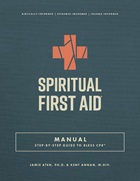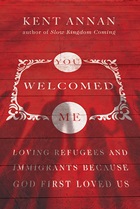Will the Church Walk in the Way of the Great Physician?

I engage with people I meet online who hold stories of church abuse and religious trauma. Putting words to religious trauma is a part of the work I do as a writer and an artist. I meet with pastors and staff members who have left church staff environments. Many of the environments in their stories are, at minimum, deeply dysfunctional; others are blatantly malignant and harmful. I’ve spoken with former church members who have uprooted from churches they invested in for years—they chose to leave after witnessing significant harm. My own story has been formed by my departure from an unhealthy church environment. The depth of heartache across stories is varied, but one common thread unites them all: broken trust.
Broken trust sounds trivial. The phrase, expressed and used, tends to transform stories of hemorrhaging wounds into something others perceive as a stubbed toe. When someone shares their story and includes the phrase “broken trust,” it likely lands on the listener as if it were a personal problem rather than a deep, theological one. Broken trust though, is catastrophic. It has been historically harmful. It deserves more caution.
Woven not only through stories of religious trauma and church abuse, broken trust is also found throughout the narrative of Scripture. Adam and Eve’s sin (Genesis 3) includes broken trust. Certainly, it is about their own wrongdoing, but the serpent was able to encourage wrongdoing by sowing doubt and exploiting trust. The fissures began when the serpent spun an alternate narrative—partial truths—to win their interest. By fashioning a believable story (Gen 3: 4, 5), Adam and Eve ate of the fruit (Gen 3:6), completing the fracture in their relationship to God. The relational break was the fault of Man, but the serpent provided the scissors and showed them where to cut.
To remedy the fissures of Eden and restore trust, God pursues his people through covenants. With Abraham, God promises Abraham a people and a heritage (Genesis 15:5, 6). With Israel, God liberates them from the oppression of one nation and promises that Israel will be established as its own nation (Exodus 19-24). With David, God promises a lineage of kings, one from which a better King will reign (2 Samuel 7)—a kinder, gentler, and more compassionate King (Isaiah 9: 6, 7).
Ultimately, all of God’s covenantal promises are fulfilled in Jesus. Christ’s broken body, raised in resurrection, mends the relational fractures we feel within our soul—our trust, made new. Christ’s work proclaims both how worthy and trustworthy God is. God did the work to repair what was ruined in the Garden. He bridged the trust gap. His character speaks to the surety of his word. He doesn’t spin narratives; he restores them.
However, the churches formed in God’s name, often stray from this path. We cannot wake one day without another story disclosing the fracturing behaviors of Christian leaders. The stories include not only embezzled funds and misused resources; there are stories of wounded and used people—harassed and sexualized. The voices of Image Bearers, members of the flock, have time and again been quieted by the shepherds who should hear them. But the sheep hurt. Just as the hemorrhaging woman sought to touch Christ’s fringed garments for healing, members look to sanctuaries to find holy wholeness. Instead, many find more brokenness.
Instead of caring for the flock, leaders are tempted to protect the institution. Church scandals are now recorded, and to keep from growing the record, leaders are tempted to hide. Like an echo of Eden, they spin the narrative. We mar the Truth by telling the half-truths. In doing so, we continue to break trust. We perpetuate the fractures, further dividing the Bride of Christ. Instead of the way of Christ, we continue to listen to the whispers of the serpent. Because leaders are perceived as mouthpieces of God, the harm they hid effectively cut the sheep off from the Shepherd they yearn for.
Broken trust is no flesh wound. We trivialize the fractures created by church leaders because we are discipled to. We believe the alternate narratives because they are impression management tactics. We eat fruit not meant for us. But we can join Jesus in repairing what was fractured in the Garden.
Leaders, we can restore the story. Rather than protecting ourselves with hedges of pride, we can own our mistakes in humility. Instead of strong-arming wounded sheep, we can listen to their cries with gentleness. When we are willing to bend down and give an ear to the lowliest among us, those in need meet a Good Shepherd—a compassionate Physician—tending their tears and triaging their wounds. We walk in another way.
We can be committed to seeing the Truth preached and practiced. Instead of breaking trust, we can work to mend it. Protecting the Church means shining a light on what has germinated among us. If we’re brave enough to hear, heed, and learn from the stories of broken trust, we begin to foster the healing of those bearing the weight of religious trauma. If we do this, we taste the Garden again. We see Heaven meet Earth.
Jenai Auman (@jenaiauman) is a writer and artist who shares thoughts on navigating life with religious trauma. She draws from both her church ministry experience and education (B.S. Behavioral Science) to write on healing and hope.
The Better Samaritan is a part of CT's
Blog Forum. Support the work of CT.
Subscribe and get one year free.
The views of the blogger do not necessarily reflect those of Christianity Today.





















